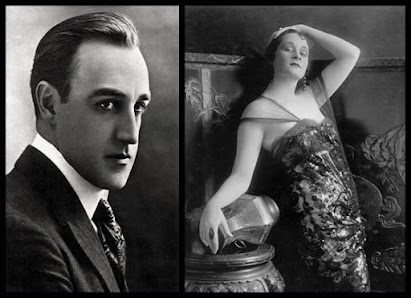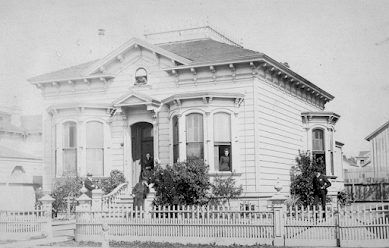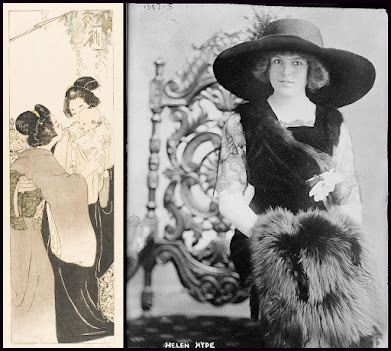 |
| Robert McKim & Dorcas Matthews |
Main Mausoleum, Section 149, Tier 7, Niche 1 (Matthews) & Unmarked (McKim)
Robert McKim (1886–1927) and Dorcas Matthews (1890–1969) were a husband-and-wife pair of American silent film actors whose careers bridged the stage and early Hollywood. Both had notable collaborations with major production studios of the silent era and shared the screen in multiple films. Their legacy lies in the foundational years of American cinema, when vaudeville, repertory theatre, and silent film intersected.
.png) |
| Claire Adams, Eugenia Gilbert, and Robert McKim in Man of the Forest (1921) |
Robert McKim
Born in 1886, Robert McKim began performing at a remarkably young age. By 14, he was already entertaining as a singing and dancing waiter in Chicago. His natural flair for performance soon propelled him into the theater world, where he joined the Alcazar stock company in San Francisco, a training ground for many early Hollywood talents. McKim developed his craft further in vaudeville, where he teamed with comic actor Johnny Cantwell in a longstanding act. His commitment to the stage world was reflected in his co-founding of the National Vaudeville Artists, an organization that provided mutual support to entertainers.
.png) |
| William Desmond, Robert McKim, and Clara Williams in Paws of the Bear (1917) |
McKim's transition to film came during the 1910s, coinciding with the rapid rise of the American silent film industry. He worked extensively with the Triangle Film Corporation and with producer Thomas H. Ince, one of the era’s major cinematic innovators. His on-screen presence—often intense and commanding—made him a favored villain or antagonist. McKim is perhaps best remembered for his role as the chief rival to Douglas Fairbanks in
The Mark of Zorro (1920), a seminal swashbuckler film that helped define the adventure genre.
.png) |
| Douglas Fairbanks, Marguerite De La Motte, and Robert McKim in The Mark of Zorro (1920) |
Over the course of his career, McKim appeared in 96 films. These included notable titles such as
The Captive God (1916),
The Apostle of Vengeance (1916),
The Kaiser, the Beast of Berlin (1918),
The Woman in the Suitcase (1920), and
The Market of Souls (1919). His characters were often intense, menacing, or morally ambiguous, and he brought to them a gravitas shaped by his years in theater.
Tragically, McKim's life and career were cut short when he suffered a cerebral hemorrhage while performing on stage in Salt Lake City. He was brought back to Hollywood, where he died on June 4, 1927. He was survived by his wife, Dorcas Matthews, and their two young children.
 |
| Dorcas Matthews & Urn Niche |
Dorcas Matthews
Dorcas Matthews was born in 1890 and came to prominence during the 1910s as an actress in silent films, particularly under the Triangle Studios banner. Like her husband, she had a background in stage performance before moving into film, where she often played secondary female leads. Her poised, expressive acting style was well-suited to the medium of silent cinema, where gestures and facial expression carried the emotional weight.
Matthews' screen credits include a number of significant productions. She appeared alongside her husband in The Captive God (1916), one of several films the couple worked on together. Her performance as Senora Nacional in Blood and Sand (1922), a film starring Rudolph Valentino, remains among her best-known roles. Matthews also played Lady Jane in Vanity Fair (1923), and appeared in such titles as The Virtuous Thief (1919), Honor Thy Name (1916), The Claws of the Hun (1918), The Price Mark (1917), and The Luck of Geraldine Laird (1920).
 |
| Dorcas Matthews, Enid Bennett, and Rowland Lee in "The Woman in the Suitcase" (1920) |
Despite often being cast in supporting roles, Matthews left a distinct impression with audiences and filmmakers alike. She was praised for her quiet strength and nuanced screen presence—qualities that made her an asset to the studio system of the time. She continued acting into the mid-1920s, after which she retired from the screen following the death of her husband.
Matthews lived a private life in her later years, eventually settling in Berkeley, California. She died on November 24, 1969, at the age of 78, from a coronary occlusion.
 |
| A still from "The Captive God" (1916) which featured McKim and Matthews |
Together, Robert McKim and Dorcas Matthews exemplify the transitional generation of performers who helped bridge the worlds of theater, vaudeville, and early cinema. While neither achieved the enduring stardom of some contemporaries, their work remains part of the rich tapestry of silent film history. Their joint appearance in several productions and enduring marriage reflect a rare partnership in an industry already known for its volatility.
Selected Filmography – Robert McKim:
-
The Mark of Zorro (1920) – as the villain, Captain Ramon
-
The Captive God (1916)
-
The Apostle of Vengeance (1916)
-
The Woman in the Suitcase (1920)
-
The Market of Souls (1919)
Selected Filmography – Dorcas Matthews:
-
Blood and Sand (1922) – as Senora Nacional
-
Vanity Fair (1923) – as Lady Jane
-
The Captive God (1916)
-
The Luck of Geraldine Laird (1920)
-
The Woman in the Suitcase (1920)
-
The Virtuous Thief (1919)
Sources: IMDb, Silent Era filmographies, Family and obituary records, San Francisco Chronicle, Grant Miller Mortuaries and Mountain View Crematorium records, The Mark of Zorro (1920) and Blood and Sand (1922) production notes and reviews








































.png)
.png)
.png)


